Entries tagged with “safety”.
Did you find what you wanted?
Mon 2 Jul 2012
Posted by admin under Dermal, Hexavalent chromium, Management, Stainless Steel, Welding
Comments Off on Hardfacing – Chromium 6 – Picture of the day
If you use heavy equipment and need to move dirt, rocks or soil, look closely at the buckets. Many times they will be coated with a material called hardfacing. It is a durable (consumable) welding bead laid out in a pattern. This pattern (from what I am told) helps to extend the life of the bucket. Apparently the cost of putting this product on the buckets is well below the cost of replacing the bucket (or teeth, or whatever).
The hazard is really on during the application of hardfacing. See my earlier post here. Hardfacing contains stainless steel (approximately 25%?, but it varies). Heating the stainless steel releases chromium in it’s hexavalent form (Cr6).
If your buckets have this on their exterior, your employees are probably exposed to hexavalent chromium at some point in the year.
However, the pattern is an art & science. Look closely at the side of this bucket…I think I know where this welder got his inspiration.
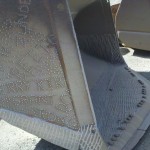
Tags: air monitoring, bucket, chrome 6, Chromium 6, cr6, excavator, hexavalent chromium, industrial hygiene, loader, safety, welder, welding
Thu 28 Jun 2012
Posted by admin under Concrete, Engineering Controls, GHS, Hazard Communication, industrial hygienist, Lead, Management, MSDS, Silica, Training, ventilation
Comments Off on IH Camp – summary
The big industrial hygiene conference (AIHCe) is held in a different city each year. This year was Indy, Indiana. Below is my personal top ten list  of “lessons learned” from last week.
- IH’s need to do a better job of sharing. We don’t share data, experiences, information, knowledge or our ideas well.
- CPWR is trying to share. Center for Construction Research & Training. Â I’m looking forward to seeing their published independent review of local exhaust ventilation (LEV) units.
- The minimum exhaust rate for a portable exhaust unit must be 106 cfm (cubic feet per min) to capture particulates (dust, silica) during tuckpointing with a 5 in grinder (but it’s also a good rule of thumb).
- Asphalt milling machines are still a huge silica problem. Water controls are NOT enough. You need a local exhaust system too. (here’s an earlier post I made on it)
- GHS Safety Data Sheets – it’s not as complicated as you think. There are some significant changes, but don’t worry, OSHA’s here to help (ha). Seriously, more information will be available soon.
- Ignite. Have you seen these before? Short, stand up speeches about their ideas/passions. Similar to TED. Some were better than others. But, did I mention they were short?
- Committees. Be careful when you open your mouth. My idea was so great, they are making me do it.
- Â ANSI A10.49! A health standard for construction. Great idea, but lots of work.
- Check out Environment for Children. I don’t know much about it, but they have a great mission.  Believe me, in the US, we’re WAY ahead.
- Presentation. It’s all up to you to make it. I will not cast blame on those who had bad presentations. BUT, it reminds me that I should work on this skill. Even if you have something good to say, if you give a horrible presentation, it’s likely no one will notice. On the other side, if your presentation is good, people will listen, even if you’re talking about nothing! Â My favorite of the week: Dr. Mike Morgan (Univ. of Washington) on Chromium VI. He was very factual, not too flashy, and make the point without needless details.

Tue 26 Jun 2012
‘Tis the season for silica (here, and here too).
I had four observations about this picture,
- paper dust masks are totally inadequate for this task, and
- why isn’t there any engineering controls (water?, vacuum?), and
- why is the observer standing in the dust plume?, and
- what does the employees do with their clothes after work?
Please be safe out there.
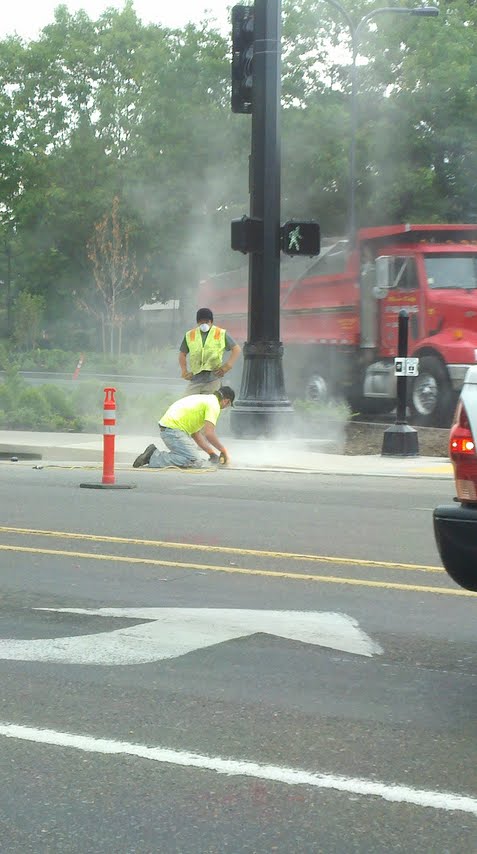
Fri 15 Jun 2012
Posted by admin under Air Monitoring, Carcinogen
Comments Off on Diesel exhaust = Carcinogen!
It was recently declared that diesel exhaust is a carcinogen by the World Health Organization’s (WHO) International Agency for Research on Cancer (link to the press release). As you know, a carcinogen is a substance known to cause cancer. The most well known carcinogens are cigarette smoke, benzene, and asbestos.
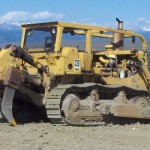
If you are in construction you probably know how many pieces of equipment use diesel…LOTS. In fact, heavy highway and large commercial construction use it almost exclusively. And, if you have ever traveled out of the US, you realize that diesel is used a lot more than gas. Don’t forget trains and commercial trucks.
So, if you think you have possible exposures to diesel exhaust on a regular basis…you should do something. Here are some ideas:
- tune-up (lower emissions, better efficiency)
- direct exhaust away from people/HVAC intake
- exhaust equipment outside
- increase dilution ventilation (usually not recommended for carcinogens)
- make sure the scrubber works
- measure exposures to employees (ask me in 20 years why this is a good idea)
- switch to biodiesel (I actually DO NOT know if this is a safe-alternative, but it does smell better)
Here is another article on it.
Fri 8 Jun 2012
On occasion, owners say they just want to do the minimum to be in compliance with OSHA. Most times this is due to lack of understanding.
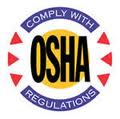 For some rules OSHA’s standard is right on the money. Take, for instance, lead (leaded paint) exposure. They have specific rules and guidelines that, if followed, keep virtually everyone protected*. The trouble is that some of OSHA’s rules have not been updated since 1973. New research and industry practices have found these levels to be unsafe even at current standards and exposure limits (PELs).
For some rules OSHA’s standard is right on the money. Take, for instance, lead (leaded paint) exposure. They have specific rules and guidelines that, if followed, keep virtually everyone protected*. The trouble is that some of OSHA’s rules have not been updated since 1973. New research and industry practices have found these levels to be unsafe even at current standards and exposure limits (PELs).
So, how do you know if the OSHA standards are current?
The quick answer is, you don’t.
Good safety professionals and industrial hygienists study the standards, recommended guidelines, and occupational limits worldwide.  In the US, the American Conference of Governmental Industrial Hygienists (ACGIH) provides the most current best practices. However, there are other methods and standards for specific hazards. ANSI, AIHA (although getting more dated due to lack of funding), European OELs (occupational exposure limits), and others.
It is rare that an employer knowingly exposes employees to a hazard. On the other hand, ignorance isn’t acceptable either….which might be the best reason for OSHA to be in existence. I wish they would spend more money on resources, information and training. Â Consult your safety professional!
*recently there is some discussion about low level lead exposure to children
Tue 5 Jun 2012
Posted by admin under Air Monitoring, Lead, Management, Respirators, ventilation
Comments Off on Lead exposures during HVAC soldering work
As you may know, sometimes tin knockers (aka sheetmetal workers) Â use sheet lead, or lead soldering, to make flashing on roof vents. Here is a picture of what these commonly look like (if there is (?) a common one).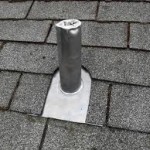
The lead iron is heated up. Lead solder, or sometimes lead/zinc solder is used. Muratic acid (or similar) is used to clean the stainless steel. The iron is used to heat up the solder and drip it on the stainless surface. Anyways, the process creates lead fumes. This is dangerous both from airborne inhalables to the contact surfaces surrounding the area.
The surfaces around these areas are usually very high in lead content. There is not a OSHA standard for lead wipe tests. However, in the past OSHA has used the HUD standards and cited employers under the general duty clause. If you are performing these tasks, please make sure you are doing everything you can to limit the airborne, dermal, and ingestion exposure.
- Follow OSHA Lead Standard (1926.62).
- Train your employees.
- Ventilation (downdraft is best). This is the best way to control the fumes.
- Post signs in the area “lead work and hazardous”.
- Perform air monitoring. I have found levels both above, and below, the exposure limits.
- Wear a respirator (1/2 face negative air with HEPA).
- Do not: eat, drink or smoke in this area.
- Good hygiene. Wash after doing these activities.
- Use a plastic sheeting on all surfaces. This makes it 100x easier to clean up.
in other words, don’t do what is in this picture below:
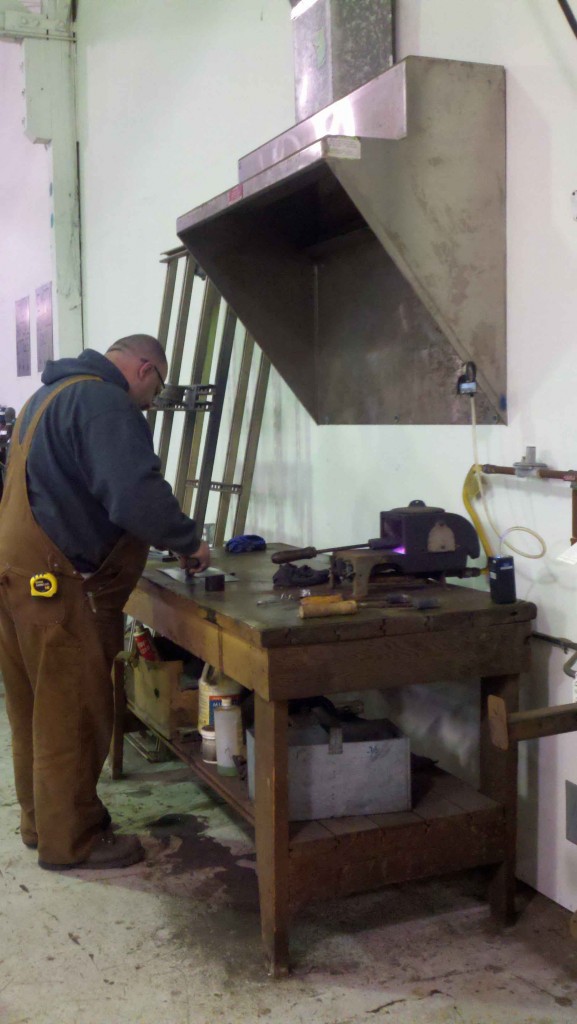
Fri 1 Jun 2012
I had posted a few weeks ago about a recent sighting of silica exposures during concrete/asphalt cutting. Then, today, at a stoplight…there it is.
A worker was using a gas powered hot saw (cut off saw) with an abrasive blade to cut a concrete pipe. No respirator.
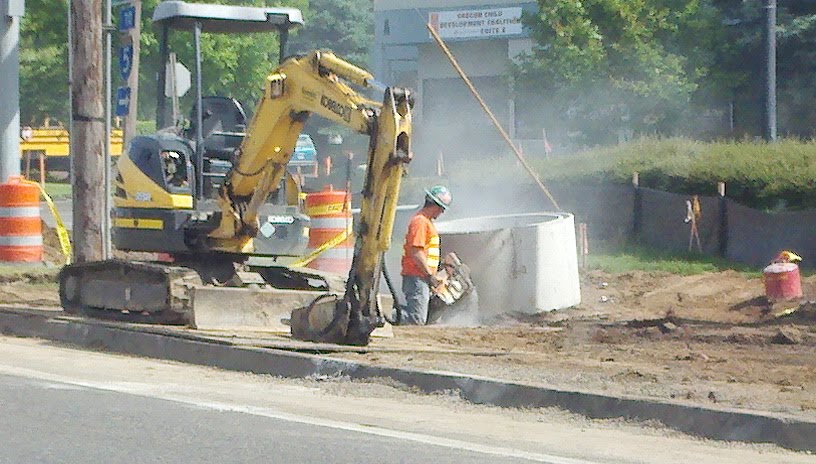
If you were me, what would you do? (Leave your answer in the comments section)
- call the company main office?
- stop and caution the employee?
- call OSHA?
- take a picture and post it for the world to see (check…ha)
- offer to buy a respirator
- perform air monitoring for them? (for free, of course.?)
Wed 30 May 2012
Posted by admin under Hearing Conservation, hearing protection, Noise
Comments Off on Noise Monitoring – FAQ / Q&As
I get the best questions from employees as I’m setting them up to wear a dosimeter. (FYI- this does not really apply to sound level readings, only dosimetry)
- Why do I have to wear the monitor (dosimeter)? Can’t we just place it in the middle of the area?
Ideally we want the dosimeter to measure the individual exposure. Many factors influence the average noise level, including work practices, location (sound bouncing & dampening), height, proximity to others, equipment, etc.
- What is the dosimeter actually measuring?
A dosimeter measure the sound pressure level, measured in decibels A-weighted, dBA (usually). It can record this level and average it (usually) for every 1 minute period. The amount of information it gathers is staggering…and confusing.
- What if we work a longer shift (more than 8 hours) will the results of the noise monitoring be the same?
Yes, the results are (usually) given as an average. So, in theory, if you measure the noise for 15 minutes and it is the same for the next 7.75 hours, it should be the same. However, if you work more than 8-hours a day OSHA actually decreases the amount of noise you can be exposed to. They have a table (G-16)  that attempts to explain it.  If you know the average level of noise (say it’s an average of 95 dBA 8-hour TWA), then you can determine the time you are allowed (answer: 4 hours).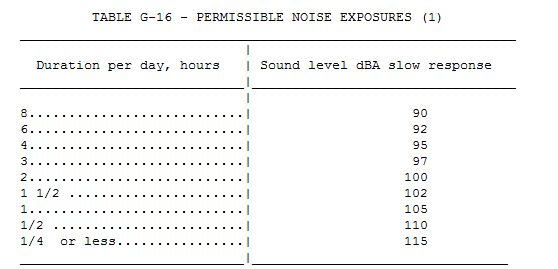
- How often should noise monitoring be performed?
There is not a specific rule from OSHA on how often you must monitor. However, the guideline is yearly. Â Or if/when significant changes occur “which might effect the results of this testing” (I always use this statement in my reports).
- Which individual employees should have their noise level measured?
It is best to let the industrial hygienist make this determination (there are several good reasons). If you are just starting out, they will often choose an average, or those who might have the highest noise level exposures.
- I’m wearing hearing protection, why don’t they take that into account when they determine the average readings?
Your exposure is determined without regard to the specific type of hearing protection used. If you are wearing the wrong type of hearing protection, or if it is worn incorrectly, you could still have this exposure.
Wed 23 May 2012
Construction and exposure to Hepatitis B (or C or HIV) doesn’t arise very often since construction workers are usually not around blood, bodily fluids, or patients. There are times when construction must occur at wastewater treatment facilities, municipals, or in active sewers. Occasionally exposure can come from illegal drug use or the remnants of it (think of a project underneath a downtown bridge).
Currently there is not a specific rule for bloodborne pathogens in construction (1926). However, if it is reasonably anticipated that an employee might have exposure, you should take precaution.
What are the dangers? First, you must have occupational exposure to skin, eye, or mucous membrane with contact to blood or infected material.  Exposure may then cause the employee the diseases of Hepatitis B, C and HIV. Occasionally construction companies want to know if they need to offer their employees the Hep B vaccine.
The real-threat is contact with blood. Here is a question to ask… Do you anticipate seeing any blood on the jobsite? If the answer is NO…then you probably are under what is called the COLLATERAL DUTY clause.  In this case, the hepatitis B vaccination does not need to be given…until the presence of blood. Once this happens (and employees must be trained beforehand) you have certain steps to take in order to offer the Hep B vaccination. Oregon OSHA (and others) have adopted this stance.
In this case, the hepatitis B vaccination does not need to be given…until the presence of blood. Once this happens (and employees must be trained beforehand) you have certain steps to take in order to offer the Hep B vaccination. Oregon OSHA (and others) have adopted this stance.
If you have probable exposures you must:
- make an exposure control plan
- train your employees
- universal precautions – google it…there’s a lot to know
- protect your employees (engineering controls, work practices)
- housekeeping – cleanup
- label
- keep records
Oregon OSHA has some good info here.
Tags: biohazard, bloodborne pathogens, city, construction, HepB, HepC, HIV, safe, safety, sewer, treatment, vaccination, vaccine, waste water









